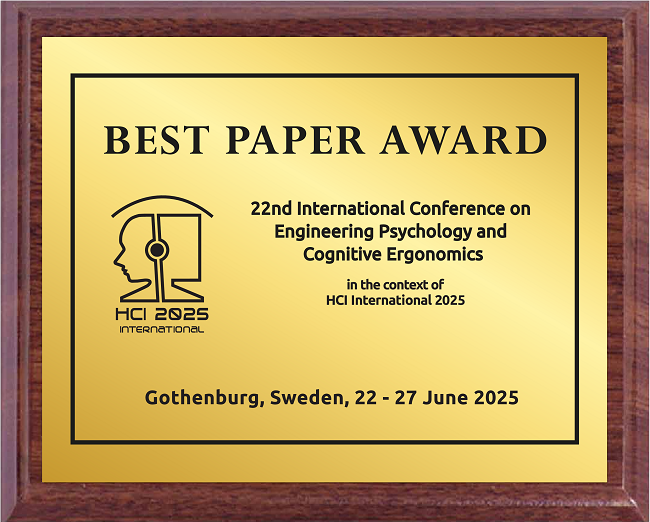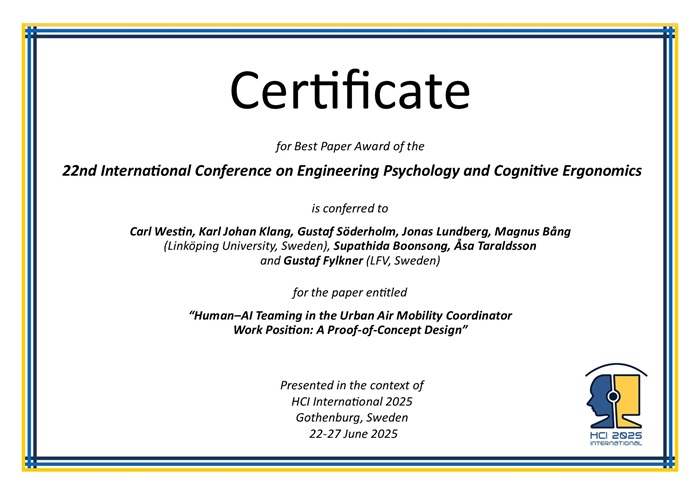The Best Paper Award of the 22nd International Conference on Engineering Psychology and Cognitive Ergonomics
has been conferred to
Carl Westin, Karl Johan Klang, Gustaf Söderholm, Jonas Lundberg, Magnus Bång (Linköping University, Sweden), Supathida Boonsong, Åsa Taraldsson and Gustaf Fylkner (LFV, Sweden)
for the paper entitled
"Human–AI Teaming in the Urban Air Mobility Coordinator Work Position: A Proof-of-Concept Design"

Carl Westin
(presenter)

Best Paper Award for the 22nd International Conference on Engineering Psychology and Cognitive Ergonomics, in the context of HCI International 2025, Gothenburg, Sweden, 22 - 27 June 2025

Certificate for Best Paper Award of the 22nd International Conference on Engineering Psychology and Cognitive Ergonomics presented in the context of HCI International 2025, Gothenburg, Sweden, 22 - 27 June 2025
Paper Abstract
Drones and vertical take-off and landing aircraft are set to revolutionise mobility in cities, necessitating advanced traffic management solutions for the low-level U-space airspace. The transition from piloted to autonomous operations will require a shift from traditional air traffic management to highly automated systems, while human oversight remains critical for handling emergencies and operational uncertainties. This paper presents a proof-of-concept design for a Urban Air Mobility (UAM) Coordinator work position, where a human operator collaborates with an AI-based Digital Assistant (DUC) to manage futuristic U-space operations in Stockholm, Sweden. The study explores the feasibility, challenges, and opportunities of U-space traffic management while examining effective human-AI teaming. The proposed UAM Control Centre, operating under a U-space Service Provider, integrates 25 U-space services, balancing automation with human oversight. The design of the workstation includes a three-screen interface for situational awareness, communication, and decision support. The DUC improves efficiency by managing routine tasks like conformance monitoring, while the UAM Coordinator focusses on strategic decision making. Developed through a two-year co-design process with air traffic management and U-space experts, this concept aligns with European U-space regulations. Future simulations will further evaluate the performance of the DUC in improving safety and efficiency. The study advances the development of human-centric Human AI-Teaming (HAT) solutions to enhance safety and efficiency in safety-critical environments, with a particular focus on complex urban airspaces.
The full paper is available through SpringerLink, provided that you have proper access rights.


